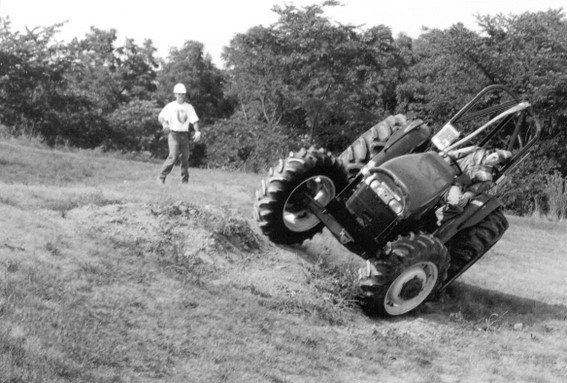Tractor Rollovers Picture This

What´s wrong in this picture? According to the National Institute for Occupational Safety and Health (NIOSH), approximately 250 people per year are killed as a result of agricultural tractor rollovers. The causes of rollover fatalities are diverse and involve the inherent risks on farms and farm operations, economic limitations to invest in safety equipment, and long-held beliefs and attitudes regarding safety in general.
A tractor rollover event occurs when its center of gravity is displaced outside its base of stability. This holds true whether the tractor encounters a side rollover or rear rollover. As long as the tractor is operated such that the center of gravity remains within the base of stability, the tractor will not roll over.
Preventing tractor rollover injuries can be done in two ways: preventing the tractor from rolling over in the first place; and protecting the tractor operator in case of a rollover. In case of a rollover, there are several ROPS options currently available and in others still in the testing phase.
To reduce the risk of a side rollover operators should drive at appropriate speeds, set wheel tread as wide as possible, stay away from steep slopes, ditches and embankments, keep front-end loader buckets low during transport or when turning, lock brakes together when traveling at high speeds, drive forward down steep slopes and back up them, and slow down when pulling rear-mounted equipment.